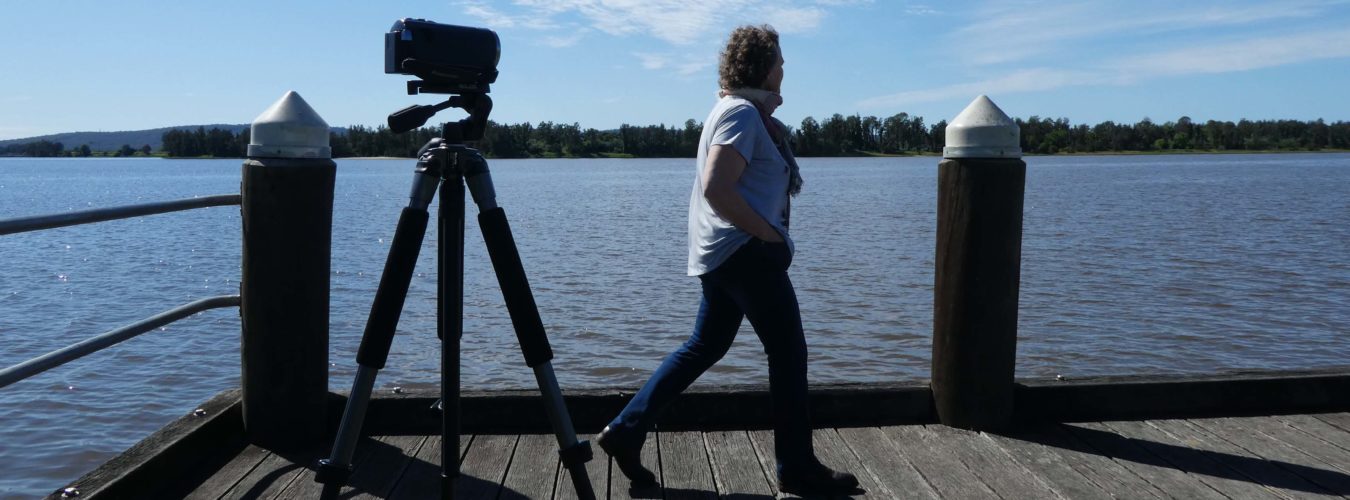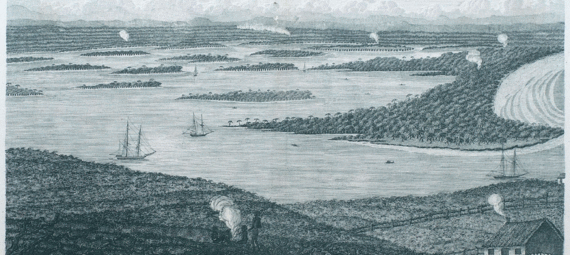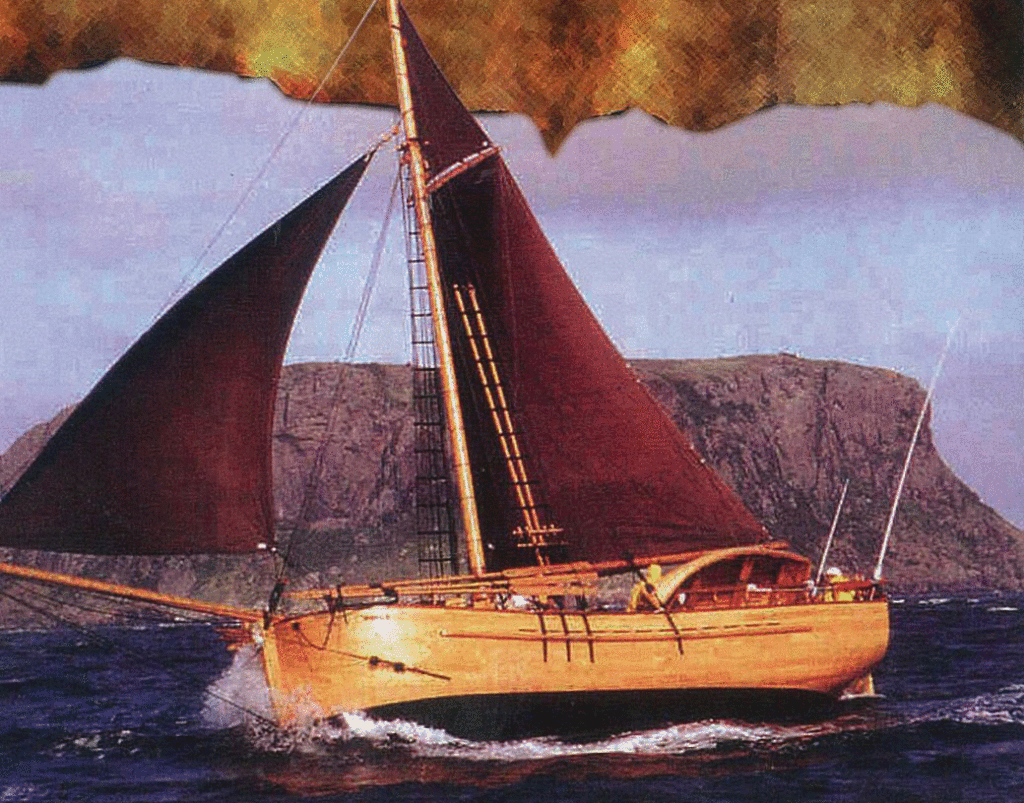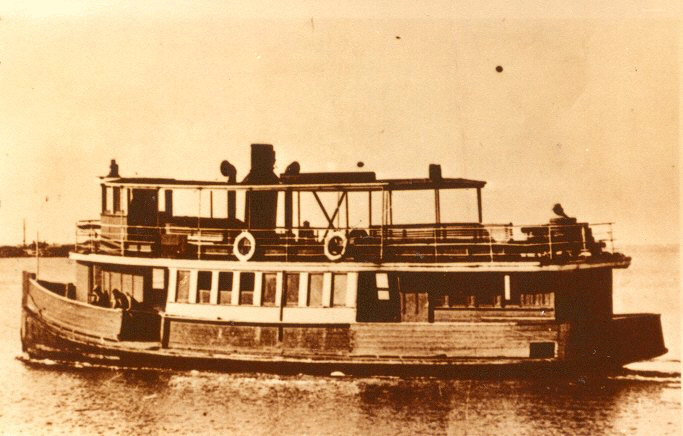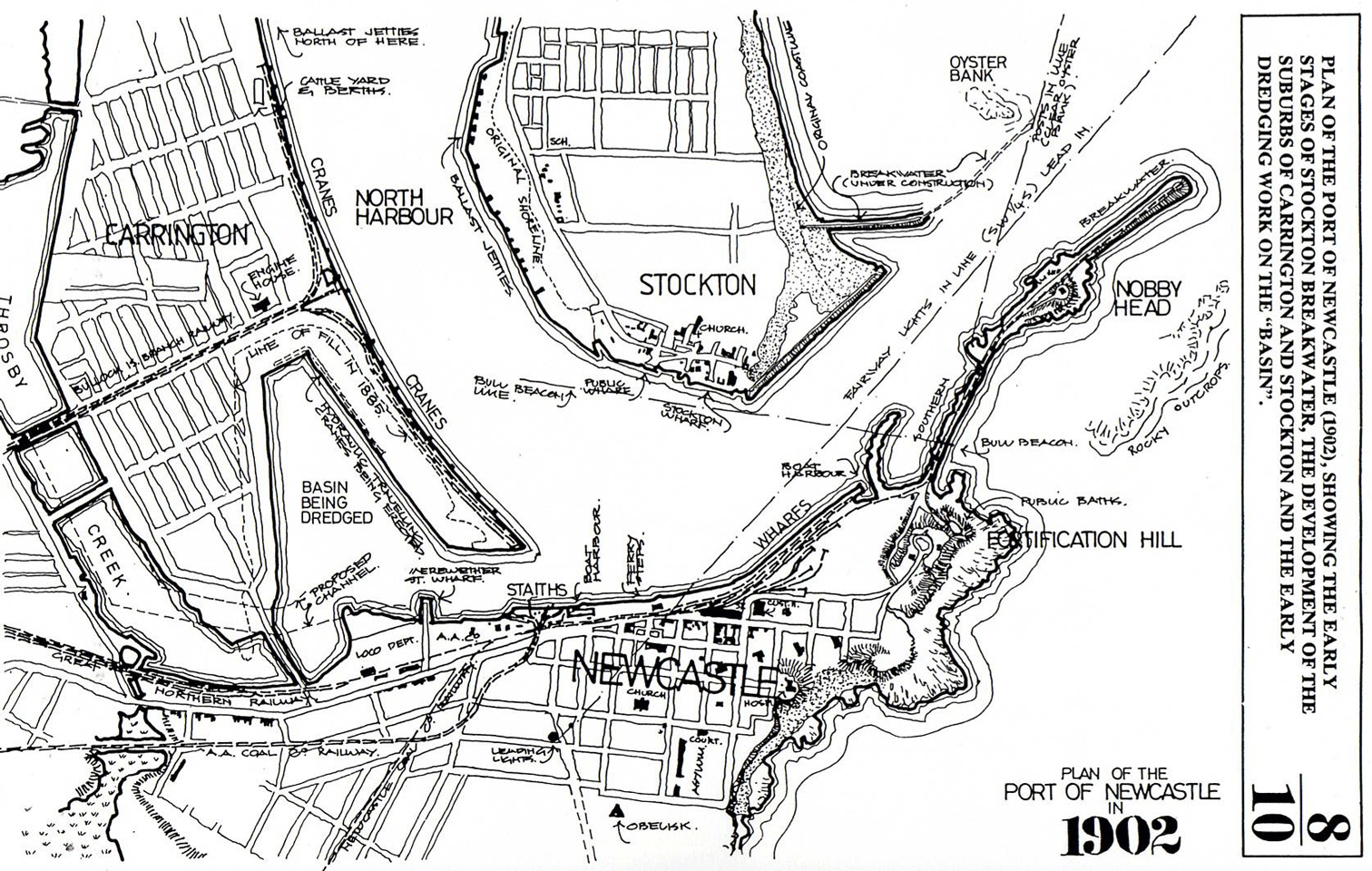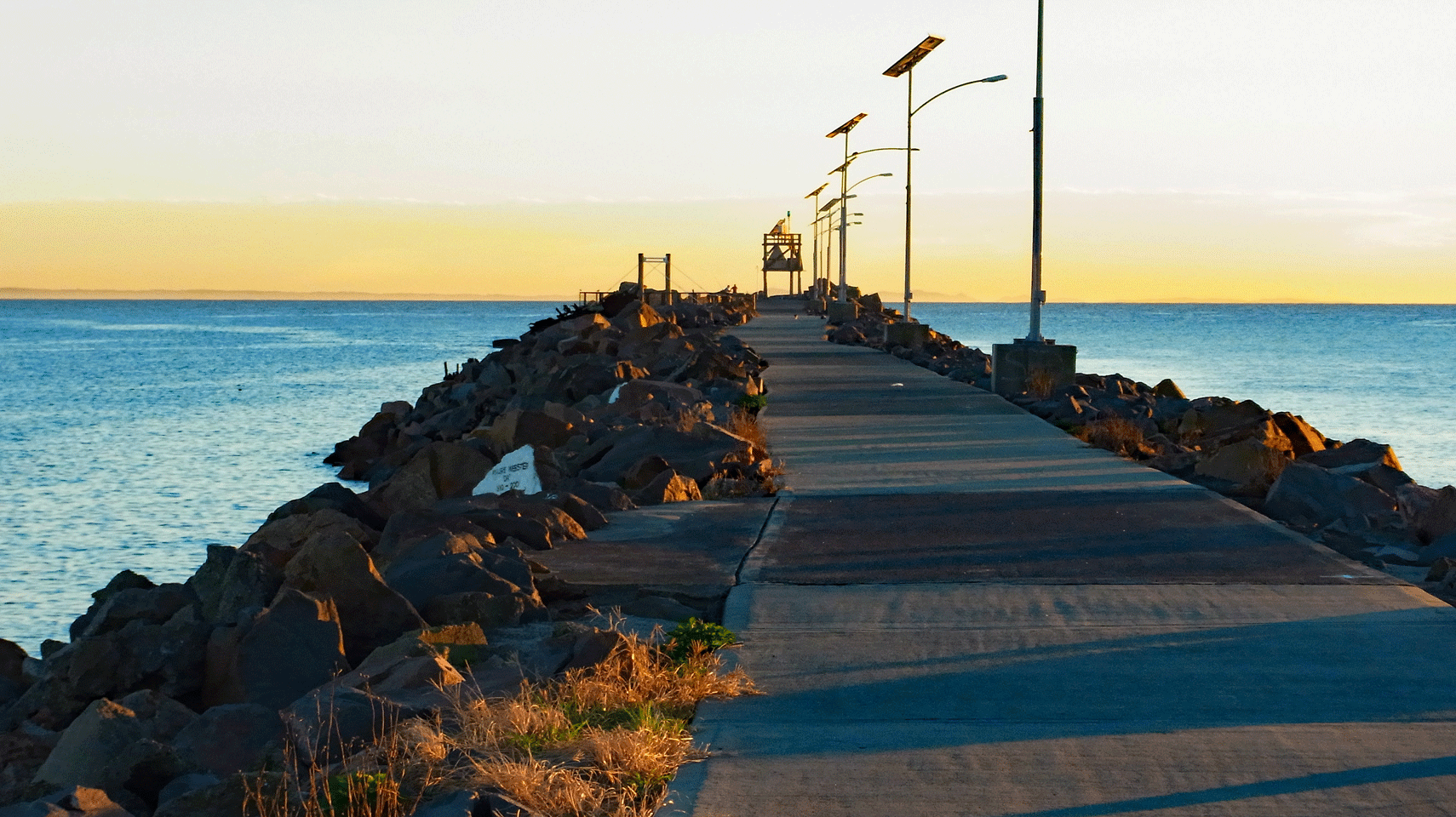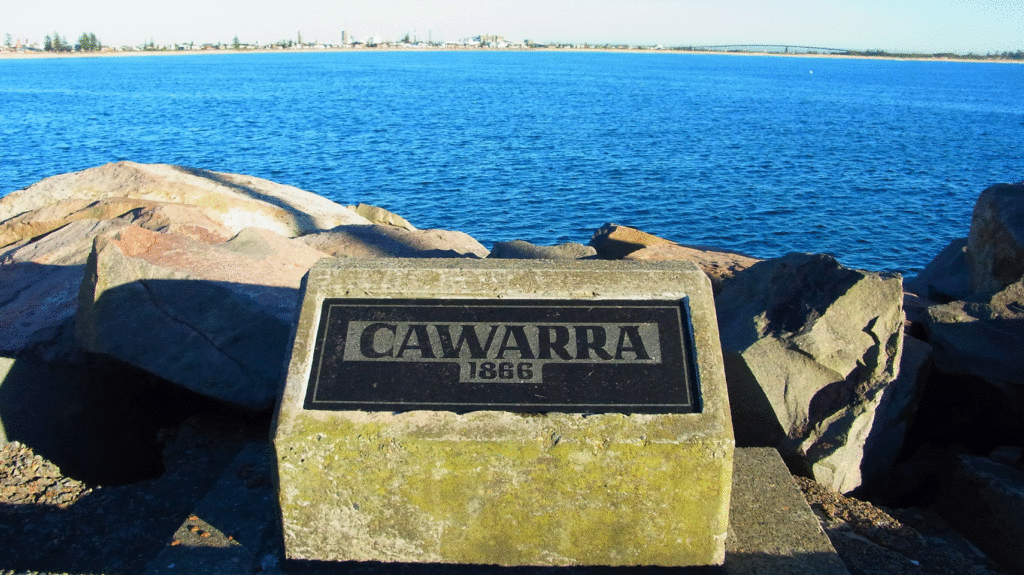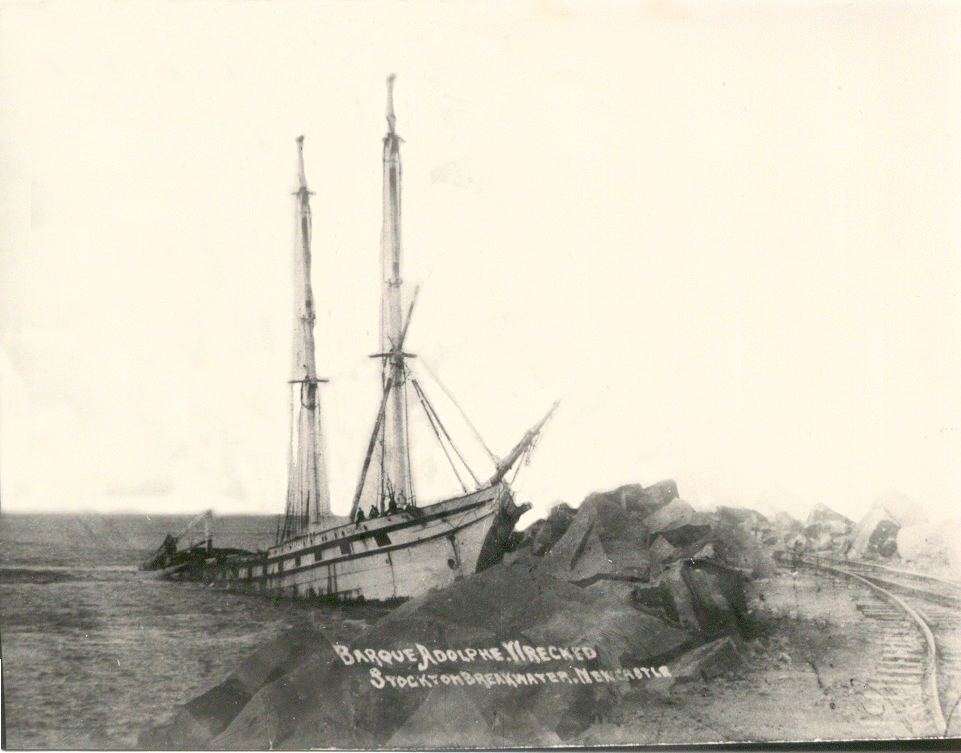Stockton has always been a maritime suburb of Newcastle and it still is. Until the impressive Stockton bridge was opened in 1971, boat was the only direct and practical way way to get there. With the Hunter River and busy port of Newcastle on the eastern shore and the Tasman sea on the western one – an interesting nautical history was almost inevitable. We took a leisurely stroll through Stockton’s maritime past and here’s what we discovered.
Why it’s called Pirate Point
If Two Minute Postcards had been in charge of geographical place naming, we’d never have changed the name of Stockton from the previous swashbuckling Pirate Point. It’s true that Stockton sounds a lot more respectable, but the former name conjures up romantic visions of Captain Jack Sparrow sailing in on the Black Pearl, dropping anchor just off from the present day ferry terminal and coming ashore for a glass of rum at the General Washington Hotel (apparently known fondly as “The Washtub”).
The reality of how the name Pirate Point came to be is a bit less romantic but certainly very interesting. In November 1800 a gang of 15 convicts seized the 25 ton sloop Norfolk in Broken Bay as it sailed from the Hawesbury River to Port Jackson laden with wheat.
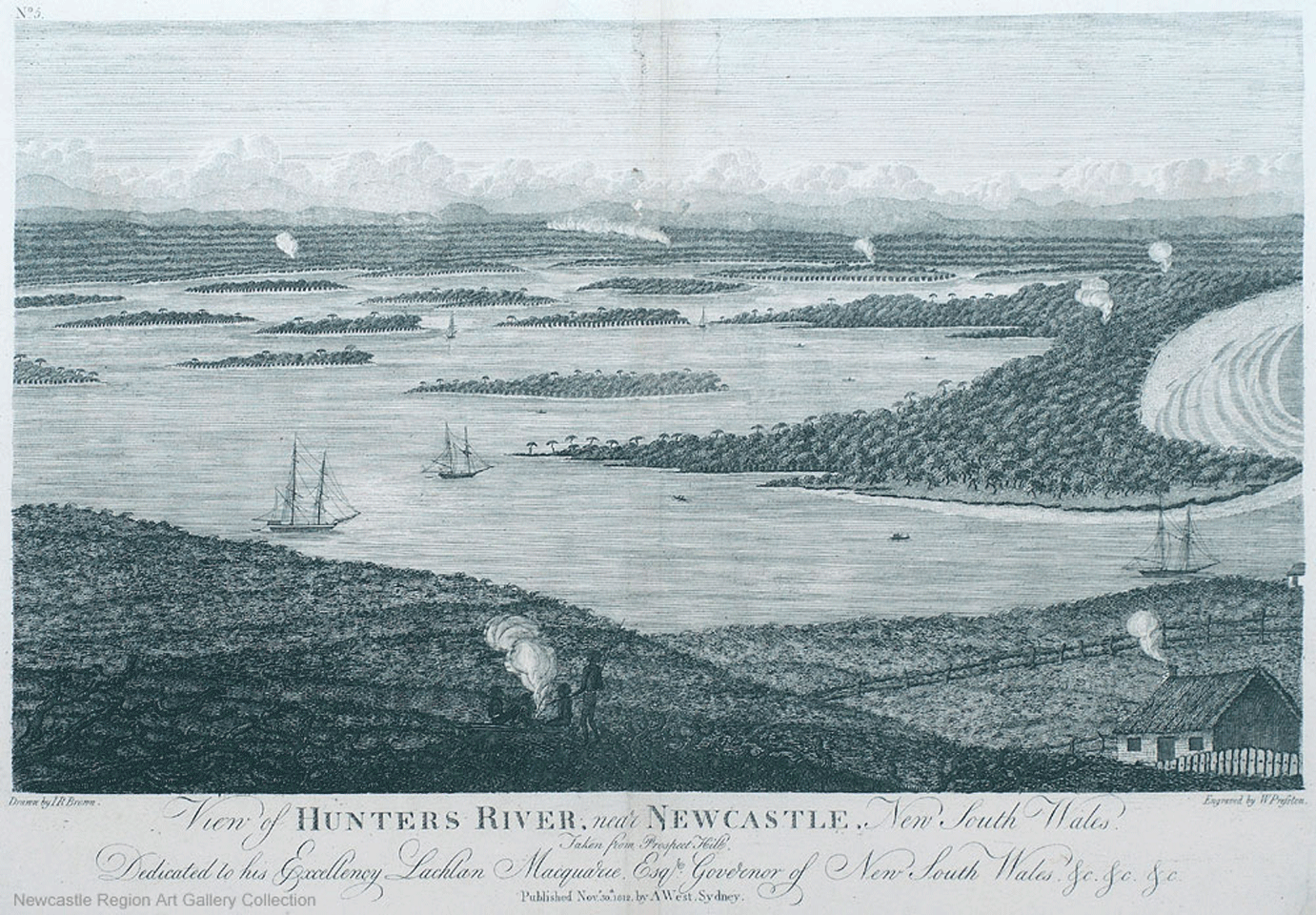
The Norfolk was already a quite well known ship which had been used a survey vessel by Bass and Flinders who between 1798-99 used it to circumnavigate Tasmania for the first time and prove the existence of Bass Straight.
Apparently the convicts’ plan was to sail on to the Dutch settlements of Indonesia. The plan soon fell apart however, when they called into the Hunter River where the Norfolk ran aground in bad weather on the southern tip of what is now called the Stockton peninsula. Realising they needed to get away from the port quickly, the convicts seized another smaller boat and headed for the open sea – this time with only nine men on board. The other six elected to stay behind with local Aboriginal people.
Meanwhile, NSW Governor Phillip King was very concerned about the acts of piracy and issued a proclamation that no vessels should sail alone between Port Jackson and the Hawkesbury River. King further ordered that if any should be approached by pirates they should immediately cut down their masts and rigging and run the vessel aground. As an extra measure he said every boat must have an axe or tomahawk on board with which to put a hole through the hull to sink the boat if needed. He clearly did not suffer pirates gladly.
King sent an armed boat to the Hunter River where they found the wrecked Norfolk and started chasing the convict pirates up the coast. They eventually caught and captured them and all were found guilty and sentenced to death. The two ring leaders were hung but the other seven offenders were reprieved at the foot of the gallows and were transported for seven years to the penal settlement on Norfolk Island (which, incidentally, is where the ship was built in the first place). As for the other six – it’s believed they lived with Aboriginal people around the Newcastle area for the rest of their days.
With a good tale like that it’s little wonder the name Pirate Point stuck for a good portion of the century until the more sedate name of Stockton was adopted in 1862. There are still reminders of that business with the pirates in the name of the tip of the peninsula near the northern breakwall and in the names of some local businesses – the local surf shop and pizza stores. In 1999, a plaque was attached to a large rock slab on Pirate Point to remember the loss of the Norfolk.
During the 1990s a replica of the Norfolk was built (using not a single metal nail) and is now part of displays at the Bass and Flinders Centre in George Town Tasmania,
Catch the Ferry across
This is a must in your nautical journey into the history of Stockton. As you board the ferry over at Newcastle’s Queens Wharf or at Stockton’s ferry terminal, you can contemplate the fact that a passenger ferry service of some kind or other has been running more or less continuously for more than 160 years . The first ferry service was started in 1853 by a bloke called Hugh Boyce in a rowing boat which must have taken a good deal more time and effort than today’s five minute ride.
Things improved over the years and the Boyce family were involved for decades. There was a separate service to North Stockton until 1939 and vehicle ferries operated at different times until the building of the bridge made them obsolete. In the 1930s, a passenger ferry called the Bluebell sunk in a collision and three people drowned.
In 1982, ferries between Newcastle and Stockton stopped briefly and the well known Sidd Fogg bus company stepped in with 22 services a day going round and over the Stockton Bridge until ferry services got going again the following year. Today’s ferry runs back and forth ever half hour. On weekdays its dominated by commuters going to work in Newcastle and services start from around 5.30am. On the weekend its sightseers and holiday makers. Both services run until late at night – but of course you should check the timetable.
The legacy of the windjammer age
When you get off the ferry at Stockton and turn left along the walking path, you’ll be headed into an interesting part of the this nautical tale – into Ballast Ground Park. The path runs along the water’s edge on land which is actually man-made. Before the 1920s the route of the path would have been under water. This lovely parkland where people walk and cycle and play cricket was formed between the 1800s and the 1920s in the age of the windjammers.
These were the grandest of merchant sailing ships, built of wood and steel with between three and five huge masts and square sails. They were built to carry cargo long distances. They moored beside Stockton and dumped their ballast directly over the side of the ship – collectively millions of tons of it over the years. By dumping the ballast, they could then load up with cargoes of coal and other goods which they then carried on to ports around the world. At first the ballast formed a wall with a sort of lagoon between it and the shore – and this was eventually filled in with silt and other material. The area was always known as the Ballast Grounds and today gives that name to the park.
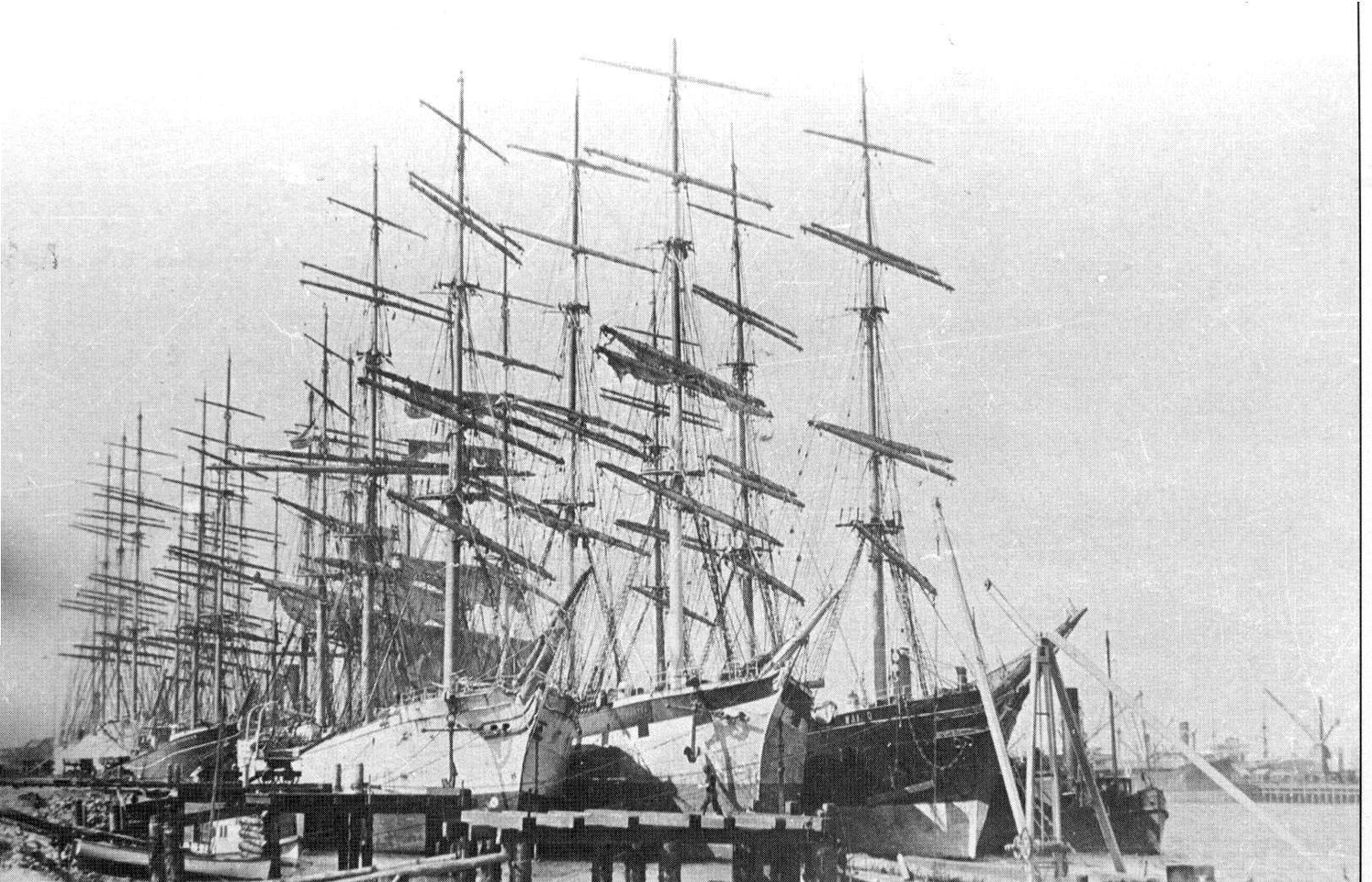
It’s said that if you walk along the foreshore of today’s Stockton, you’ll be tramping over a little bit of every country in the world. We read that the ballast includes stone from Mauritius in the Indian Ocean, soil and gravel from Peru, Chile and Ecuador in South America. But perhaps the saddest source of ballast rubble was from the horrific San Francisco Earthquake which occurred in 1906. This severe earthquake sparked a massive fire which burned for days. 3000 people were killed and 80 per cent of the city was destroyed – literally reduced to rubble. A good portion of it became a tragic cargo of ballast that was shipped all over the world, including to Stockton.
If you turn right as you leave the ferry, you’ll also be walking over other man-made ground – but it was formed from dredged harbour spoil pumped in behind a rock barrier in the 1960s. The water edge used to be back near the line of trees in Wharf Crescent.
Shipwreck walk
If you continue south east along the waterside path through Pitt Street Reserve and past the little rock wall that juts into the river mouth at Pirate Point, you will eventually come to Stockton Breakwater and the well known Shipwreck Walk. If you’re a fan of watching a good sunrise, the one kilometre long breakwater provides great views of the ocean, the shipping lane and Nobby’s Lighthouse across the channel. It’s also a good vantage point to see the first rays of the morning sun hit Stockton and Newcastle, softening the harsh lines of this industrial city (don’t forget your camera).
This breakwater is a favoured place for walkers, joggers and cyclists. Fishing fans turn out in numbers to drop in a line from the rocks or from a boat just off shore. We noted a couple of unusual things about this breakwater. It’s become an unofficial wall or remembrance for local families paying tribute to lost loved ones. Some are painted on. Some are on brass plaques fixed to the rocks. Some have bunches of flowers attached. It’s quite touching. The other unusual thing we noticed was the number of stray cats – it appeared there were dozens of them living among the rocks. They were all quite wild and quickly scrambled away if approached. We watched a variety of people put food out for them.
Beyond the fact that the breakwater is a well used local recreational structure – it’s got an amazing history of it’s own which – not surprisingly – is all about shipwrecks. The original purpose of the breakwater was to stop ships running aground at a place called the Oyster Banks, and to encourage tidal flows that would scour out the channel for the passage of shipping. It was built in stages starting in 1898 and took 14 years to complete. There are nine wrecks either entombed in the breakwater, or lying near it.
They include Cawarra 1886, Colonist 1894, Wendouree 1898, Lindus 1899 and Adolphe 1904. The hulks of some of these wrecks were deliberately included in the structure to reduce the amount of rock that was needed for the wall.
Along the length of the walk are plaques which indicate the rough position of each wreck in the structure and the year of its demise.
Most notable of these is The Adolphe who’s slowly rusting hull is wedged majestically in the northern side of the breakwater almost as if it had run into the breakwall a month ago (except that there’s not much of it left).
In fact, the breakwall was built around it.
The Adolphe was a four masted barque which had travelled from Dunkirk in France to Newcastle to pick up a load of coal. She was being towed into port by two tugs in terrible weather when the tow line broke and heavy seas pushed the vessel onto the Oyster Banks.
Strangely, it was not so much that she had run aground but had been caught on other wrecks already at the point which pierced the hull and the Adolphe immediately filled with water. The 32 person crew was rescued by some very brave local crews in very rough conditions. The wreck remains where it sank. You can read more about the Shipwreck Walk in a detailed article by Gregory Blaxell of Afloat Magazine.
Shipbuilding
There’s one last thing to mention, and that’s Stockton’s long history of shipyards and ship building which lasted more than a century – much longer than coal mining or the pirates. Little evidence of this seems to have survived, although the remains of what appears to be an old slipway are visible on the waterfront across from the Boatrowers Hotel.
I am sure someone from the local area might know more and we’re always delighted to have local input. The first record of a shipbuilder was in 1847 and over the decades that followed, the industry employed many people and built many ships and launched them into the busy shipping lanes of the city – the same well used shipping lanes of modern day Newcastle.
Stockton Historical Society detailed history of Stockton

Other stories you might enjoy
Hartley NSW: the town frozen in time
Young NSW: the story of Australia’s worst race riot
Lithgow: An amazing industrial revolution town
Glenbrook: All aboard for a lost railway
The mountain on fire for 6000 years
How Newcastle introduced radar to Australia
